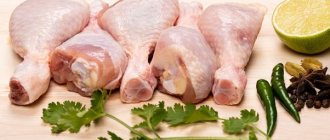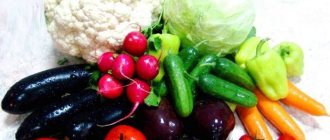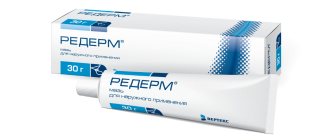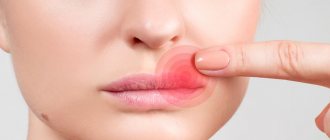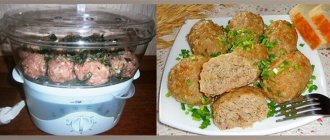Why is nutrition so important for atopic dermatitis?
The main causes of atopic skin rash include poor nutrition.
Some people have intolerance to certain foods and food allergies occur, which triggers an allergic reaction and the appearance of dermatitis. Various studies have found that in most patients diagnosed with atopic dermatitis, diet alleviates the symptoms of the disease and helps control the course of the disease. This occurs due to the fact that foods that can cause an allergic reaction are excluded from the diet. At the same time, the diet itself becomes more moderate, healthy and varied.
How to supplement the treatment of dermatitis, besides diet?
Following the rules of a hypoallergenic diet is very important, but diet alone cannot cope with dermatitis. In order for the patient to recover as quickly as possible, we suggest that you supplement the therapy prescribed by your doctor with the use of La-Cri products.
The regenerating cream contains extracts of string, violet, walnut, bisabolol, panthenol and avocado oil. These components have an anti-inflammatory, antipruritic and softening effect.
Intensive cream is used to soften and moisturize very dry skin. Contains wheat germ, shea and jojoba oils, violet and licorice extracts, bisabolol, allantoin and lecithin.
Cleansing gel is an optimal replacement for conventional cleansers. The composition includes licorice and walnut extracts, hypoallergenic detergent components, avocado and olive oil derivatives.
Principles of nutrition for atopic dermatitis in adults
If you or a loved one periodically develop atopic dermatitis, then diet is the first thing you should pay attention to. There are several basic rules that should be followed when drawing up a patient’s menu:
Compliance with drinking regime. The patient must drink at least 1.5 liters of water throughout the day; this volume does not include teas, soups and other liquid foods. Thanks to the flow of fluid in the body, metabolic processes are activated, toxins are released from cells and tissues, which sometimes provoke nonspecific allergic reactions. On average, men need to drink about 2.0 - 2.5 liters of water per day, for women this volume is reduced to 1.5 liters (the amount is calculated based on the fact that 30 ml of liquid is needed for every kilogram of body weight).
Fractional meals. The weight of one serving should be about 200 grams, the total number of meals per day should be 5-6 times. Fractional nutrition for atopic dermatitis in adults and children promotes a uniform intake of nutrients and vitamins into the body. This does not create an increased load on the digestive tract and eliminates excess nutrients, which can often provoke allergies.
Mandatory inclusion of protein in the diet. A diet for atopic dermatitis in adults involves a balanced diet, so you should not give up meat and dairy products. The only exception is cow's milk protein intolerance; in this situation, dairy and fermented milk products should be replaced with products of plant origin (soy milk, cheese, etc.). And varieties of meat with a high allergenic potential should be replaced with lean ones.
Inclusion of fats in the diet. A diet for atopic dermatitis in children must certainly contain plant and healthy animal fats. Polyunsaturated fatty acids Omega-3, Omega-6 and Omega-9 are especially valuable for the body. The main sources of these substances are fatty sea fish, but in the case of atopic dermatitis, preference should be given to herring, as well as vegetable oils: sunflower, olive, cottonseed, flaxseed, sesame.
It is advisable to develop a menu for the week for atopic dermatitis in advance. This way you can plan your diet and diversify your diet by including as many different dishes as possible. This is especially important when it comes to children and teenagers, since they don't like to eat the same thing every day.
General rules
Among inflammatory skin diseases, dermatitis occupies a large share, the most common forms of which are atopic and seborrheic dermatitis . Despite the differences in the etiology and pathogenesis of these forms of dermatitis, the most important element in the treatment of these diseases is a hypoallergenic diet.
Hypoallergenic diet for atopic dermatitis
The main factor in the development of atopic dermatitis (AD) is an inherited predisposition to allergies, which is accompanied by increased production of total immunoglobulin E (IgE), generalized hypersensitivity and a specific reaction of the body to allergens. Hereditary predisposition is realized through a system of various causal factors (triggers) and environmental factors. Atopic dermatitis in the vast majority of cases is caused by food allergens. The most important causal allergens in adults are cow's milk proteins, chicken eggs, fish and seafood, cereals, soy proteins, red-orange vegetables and fruits, and nuts. It is against the background of food allergy, which is a factor of initial sensitization, that the body’s hypersensitivity to other allergens is formed through the mechanism of cross-reactions.
For children, the high antigenic load on the fetus is of great importance during the pathological course of pregnancy , with improper nutrition of the mother during lactation, early introduction of complementary foods or transfer to artificial feeding with the introduction of foods in the diet that are not appropriate for the child’s age, as well as pathology of the gastrointestinal tract and dysbiosis intestines, which causes increased absorption of various antigens .
The diet of a patient with atopic dermatitis is based on the principle of elimination - excluding foods and dishes from the diet:
- containing causally significant and cross allergens;
- having high sensitizing activity;
- including artificial food additives ( antioxidants , dyes, preservatives, flavors);
- promoting the release of histamine (chocolate, coffee, orange juice, cow's milk, wheat bran);
- containing a large amount of biogenic amines (histamine carriers) - tomatoes, strawberries, cocoa, legumes, hazelnuts, tuna, cheeses, smoked meats, spinach, herring fillets.
An elimination diet is selected for each patient individually, taking into account his “personal” food allergens and the list of “potentially allergenic foods,” as well as the stage of the disease.
In the acute period, the basis of the diet consists of foods with weak allergenic activity: lean beef, boiled chicken, pumpkin (light colors), squash, zucchini, offal (liver, kidneys, tongue), turnips, garden greens, green apples, cucumber , fermented milk products, low-fat cottage cheese, oatmeal, rice and pearl barley, plums, gooseberries, white currants, watermelon, olive and sunflower oil, pears, dried fruits, butter. At the same time, individual food allergens (if known) are excluded.
When preparing dishes during this period, you must follow a number of rules:
- the allergic activity of products is significantly reduced by heat treatment, so it is necessary to minimize the consumption of raw vegetables and fruits;
- Before eating, potatoes should be kept in cold water for several hours to reduce the starch content;
- porridge must be cooked in the third water - after boiling, the water must be drained and new water must be poured in, repeat twice;
- When preparing broths, vegetable purees and soups, the first water after boiling should also be drained.
If the allergen product is not known, then to identify it, a rotation diet , the essence of which is to divide the food products into several groups (meat, vegetables, dairy, cereals, fruits). The basic principle of this diet is to include in the daily diet for four days only one product from each group (1 type of meat, 1 type of cereal, 1 type of vegetable/fruit, 1 type of lactic acid products, 1 type of cereal). Repetition of any product is allowed only from the 5th day. This way you monitor reactions to products. If any product in the food set arouses your suspicions, try introducing it into the diet again in another set. If the reaction occurs again, it must be excluded from your diet. For analysis, it is recommended to keep a food diary.
The duration of a strict diet for an adult patient should be about 3 weeks and for children - 10 days. The fact of persistent disappearance of the symptoms of the disease can serve as a guide. Next, the diet is expanded to include foods with average allergenic activity.
First, white bread, boiled pork and lean white fish, fresh onions, green/yellow vegetables and fruits are introduced, and if there is no negative reaction, orange and red fruits/vegetables are introduced, as well as freshly squeezed juices, compotes and fruit purees. Thus, the basic diet of a patient with atopic dermatitis is formed. Products with a high allergic potential (eggs, milk, seafood, fish, citrus fruits, melon, chocolate, fish caviar, tomatoes, honey, nuts, strawberries), but important in terms of micronutrient content and energy significance, can be tried to be introduced gradually, one at a time and starting with small quantities. And, based on the body’s reaction to them, decide the possibility of including them in the basic diet. The following table gives some idea of the allergenic potential of products.
| Allergenic potential of products | Products |
| High degree of allergenic activity | Cow's milk, chicken egg, crustaceans, chocolate, cheese, fish, coffee, nuts, mustard, wheat, strawberries, strawberries, raspberries, beets, grapes, persimmons, melon, cocoa, red caviar, tomatoes, pomegranates, celery, black currants, carrots, pineapples, blackberries, spices, sauces, citrus fruits, honey, mushrooms, canned and pickled foods, smoked meats, carbonated and alcohol-containing drinks. |
| Average degree of allergenic activity | Turkey, pork, rabbit, potatoes, rice, peas, apricots, peaches, cranberries, corn, green peppers, buckwheat, bananas. |
| Weak degree of allergenic activity | Beef (low-fat varieties), lamb, boiled chicken, pumpkin (light colors), turnips, zucchini, squash, fermented milk products, green and yellow apples, gooseberries, plums, white currants, garden herbs, butter, green cucumber, watermelon , offal (liver, tongue, kidneys), almonds, pearl barley, rice, oatmeal, olive pears, and sunflower oil, dried fruits. |
The diet of a patient with atopic dermatitis should limit foods containing easily digestible carbohydrates: confectionery, honey, sugar, jam, sweets. It is recommended to replace sugar completely with xylitol , saccharin , and aspartame . The diet should include foods rich in calcium (fermented milk products, cottage cheese), which have a pronounced antiallergic effect, and limit foods rich in oxalic acid , which interferes with the absorption of calcium. Strong broths, spicy and smoked dishes, sauces and seasonings are excluded. Salt and any salty foods are subject to restrictions.
In case of allergic dermatitis , the trigger for the development of which is not food factors, but direct contact with the allergen (through skin contact with it), it is extremely important to first eliminate the causative factor and the time of its exposure. Contact sensitization of the body occurs in both adults and children, even in the first months of life. The cause is most often chemical ingredients and dyes in plastic products, toys, which cause rashes and redness on the hands and face, and the composition of clothing.
The difficulty in identifying a contact allergen factor lies in the fact that it is very difficult to trace the connection with the triggering action of any chemical reagent, since the aftereffect is often delayed. That is, contact with the allergen has already been eliminated, and clinical manifestations of dermatitis develop after 24-48 hours.
In any case, for atypical allergic contact dermatitis, a general hypoallergenic diet is indicated. The same anti-allergenic nutrition is required for oral dermatitis and treatment of Dühring's dermatitis . However, dietary nutrition for Dühring's dermatitis additionally provides for the complete exclusion from the diet of foods containing gluten (gluten), which is a complex protein found in cereals (wheat, rye, barley). The diet for oral dermatitis, in addition to the general requirements for a hypoallergenic diet, includes the exclusion of hot, hot, spicy foods and foods containing coarse dietary fiber to reduce irritation of the affected part of the skin around the oral cavity.
Seborrheic dermatitis is caused by an increase in the secretion and change in the composition of sebum, accompanied by hyperactivation of the fungal microflora of the genus Malassezia and inflammation of the skin. With seborrheic dermatitis, areas of shiny, greasy, thickened skin and dandruff on the head with areas of erythema on the skin, which are accompanied by mild itching, appear on the face, head, and back. Nutrition for seborrhea should be physiologically complete with a menu limit of white bread, animal fats, refined carbohydrates, salt, hot seasonings and spices, and foods containing a lot of cholesterol . The basis of the diet should be dairy products, low-fat fish, boiled meat, brown bread and foods rich in fiber (porridge, vegetables/fruits).
“Forbidden” foods for atopic dermatitis
Patients with frequent relapses of skin rashes need to carefully plan their menu and include only healthy foods that do not provoke an exacerbation of dermatitis. Potentially dangerous products that can provoke deterioration of the condition include several groups of products. Thus, a hypoallergenic diet for atopic dermatitis excludes the use of:
- some types of berries and fruits (strawberries, lemon, pomegranate, currants, cranberries);
- certain vegetables and herbs (eggplants, tomatoes, radishes, radishes are prohibited);
- most types of nuts (peanuts, almonds, hazelnuts and others are prohibited).
When creating a menu for atopic dermatitis, patients often strive to eat only natural products. Sugar is also subject to a general ban; instead, natural honey is being added to dishes for sweetness. This is a mistake, since absolutely all bee products are strong allergens. Even a healthy person should use them with caution, in moderation.
Table of allergenicity of products from the Union of Pediatricians
If we talk about the allergenicity of food products, then it largely depends on the body’s susceptibility to food allergens. But there are general recommendations that the Union of Pediatricians recommends following.
Table 2. Permitted and prohibited products
| What you can't eat: | It is possible, but in moderation: | Allowed: |
| Fatty and spicy dishes, spiced cheeses, pickled delicacies. | Whole milk and butter. | Bread made from rye flour. |
| Confectionery and chocolate, as well as desserts with high cocoa content. | Cornflakes. | Cereals: buckwheat, lentils, rice (you will have to soak it first), oatmeal. |
| Mushrooms in any form. | Semolina, white bread. | Lean meat: preference is given to rabbit, lamb, veal, you can include beef tenderloin in the diet. |
| Baked goods made from refined flour, sugar. | Onions and cucumbers. | Olive oil, white cabbage and broccoli. |
| Exotic fruits, fruits and vegetables of red and orange color. | Cranberries, sea buckthorn and other berries are red or yellow. | Zucchini stewed or baked. |
| Honey, nuts, most dried fruits, citrus fruits. Margarine and its contents, mayonnaise and other fatty sauces. | Sawing eggs. | White or green apples. |
| Smoked, canned and salted fish, meat, store-bought convenience foods, carbonated drinks. | Pasta made from durum wheat. | Cottage cheese, kefir, fermented baked milk with low fat content. |
More often, skin rashes appear after eating honey, nuts, red fruits, and citrus fruits. This reaction is also observed when fish dishes are included in the menu. It is rich in mercury, which accumulates under the fins and gills. Therefore, children with atopic dermatitis who are forced to follow a diet do not have fish or seafood in their diet.
“Allowed” products for atopic dermatitis
If you look at the list of foods that are undesirable for patients with atopic dermatitis, it may come as a shock. In fact, not everything is so bad, and there is no need to be upset, since there is always the opportunity to find healthier, but no less enjoyable food alternatives.
The habits of any person can be corrected, and eating habits are no exception. Therefore, it is necessary to endure the first two to three weeks, then the body will adapt to the new diet, and you will begin to feel more alert, energetic, and healthy.
If you look at the list of diets for atopic dermatitis, in most of them patients are allowed to consume:
- lean meats (veal or beef, rabbit, turkey or chicken);
- fish (you should give preference to species with white meat, for example, herring species, the amount of salmon should be limited);
- almost all types of vegetables (especially valuable components of the diet for atopic dermatitis are white cabbage, cucumbers, zucchini and potatoes);
- some fruits and berries (bananas, green apples);
- fermented milk products (we are talking about kefir, cottage cheese and yogurt);
It is recommended to limit the amount of seasonings for atopic rash. You can add a little salt, black or red pepper. Vegetable oil with a small amount of soy sauce is suitable as a salad dressing.
There are also certain recommendations on how to prepare and consume dishes for atopic dermatitis:
- The most suitable way to prepare foods is to boil, bake, steam, grill or stew. In this case, all the beneficial substances in the original ingredients are preserved, and the load on the digestive system is reduced, which cannot be achieved by frying.
- Almost all types of cereals are allowed. Especially often, pearl barley, buckwheat, oatmeal and flaxseed porridge are included in the hypoallergenic diet for atopic dermatitis in children. It is better to cook them with water, since milk can provoke an allergic reaction. To improve the taste of the finished dish, you can add berries and fruits from the list of permitted products. But you should not put nuts, dried fruits or butter.
- Introduce new foods into the diet carefully. To prevent the development of an allergic reaction and prevent the appearance of skin rashes, it is recommended to introduce new foods into the diet carefully, adding them in small quantities. If there is no negative reaction, then you can further increase the amount of consumption (but always remember the principle of moderation and do not overeat).
- Use more vegetables. Vegetables should be used as the basis for the menu in hypoallergenic diets for atopic dermatitis in adults. They can serve as an independent dish, and are well suited as a side dish. They can be added to salads, stews, casseroles, eaten both raw and boiled, stewed. They are versatile, quite nutritious, and contain plenty of vitamins and fiber to support gut health.
Soups
We will cook with meat broth, choosing a suitable piece of tenderloin, what to do:
- Boil the meat, drain the water twice during cooking, after boiling;
- then place the vegetables for the soup into the boiling broth, after chopping them;
- remove the meat and let it drain; when the vegetables are almost ready, add it to the soup;
- Add salt a few minutes before the dish is ready, mix everything thoroughly with a wooden spoon.
Using this scheme, you can prepare any soup, taking into account the child’s preferences. We select the ingredients correctly, avoiding red vegetables, which lead to the development of an allergic reaction.
You should not prepare milk soup for a baby with allergic dermatitis; pasta in combination with milk can lead to a rash.
Atopic dermatitis in childhood: nutritional features
Since in most cases atopic skin rash occurs in newborns and children under two years of age, it is necessary to dwell separately on nutrition issues at this age.
As a rule, infants are highly dependent on how their mother eats. Therefore, if a skin reaction occurs in a child, a woman should pay attention to her diet and adjust it. If this is not possible, then you should choose a safe infant formula. It is best to opt for formulations based on hydrolyzed protein.
In case of chronic atopic dermatitis in children, complementary foods must be introduced very carefully:
- the optimal age for the first complementary feeding is 4-6 months;
- New foods should be added to the diet only during the period of remission of the disease, when the skin reaction can be monitored;
- the first complementary food should be monocomponent (that is, consist of one type of product);
- each new product is introduced into the child’s diet gradually, 1-2 weeks are given to adapt to it, other new products are not introduced into the child’s diet during this period;
- a new product is included in the child’s diet for the first time in an amount of no more than 5 ml (g), preferably in the morning feedings, in order to be able to assess its tolerability during the day (the appearance or intensification of skin rashes, changes in stool);
- in the absence of an allergic reaction, the volume of the new product is increased daily by 10 - 30 g until the age-appropriate volume of the dish is reached within 5 - 7 days;
- More often, the first complementary food is a monocomponent puree of light-colored vegetables: zucchini, squash, cauliflower, cabbage, Brussels sprouts, broccoli
- with low body weight, the first complementary food can be dairy-free, gluten-free porridge (buckwheat, corn, rice), then vegetables are introduced;
- the first fruit complementary food is pureed apples or light-colored pears;
- the use of complementary foods containing milk, sugar, preservatives, food colors and flavors, salt, and gluten is excluded.
The menu for children over the age of one year becomes more complicated. But even here, the use of highly allergenic foods should be avoided, culinary processing should be gentle, dyes and preservatives should be avoided, and it is important to monitor the child’s reaction to a new product.
The diet for atopic dermatitis in adolescents is no different from the principles of nutrition for adults. But difficulties can arise here, since teenagers tend to communicate with their peers and follow their example. It is important not just to forbid a child to eat what he wants, you need to explain with reason why he should not eat this or that product. When a teenager consciously refuses sweets, fast food, and soda, which can cause an exacerbation of atopic dermatitis, it is easier for him to control his diet and prevent breakdowns. This is an extremely important point that influences the psychosomatic manifestation of the disease.
Fully or partially limited products
A hypoallergenic diet involves the exclusion of meat and fish broths and dishes prepared using them. It is prohibited to consume any fatty varieties of red meat, chicken eggs, smoked meats, most sausages, duck, seafood (mussels, shrimp, squid), honey and honey products, all salty foods, canned food, pickled vegetables, cream, cooking and animal fats, sour cream , sweet curds, salty and fatty cheeses.
Excluded: sugar, ice cream, confectionery, jam, honey, sweets, jams. Semolina, white rice, pasta, and soy are also subject to restrictions. The menu of a hypoallergenic diet should not include products containing any food additives, fruit tea, fruit/vegetable juices from prohibited berries, sweet carbonated drinks and all drinks containing carbon dioxide and alcohol.
All seasonings (mayonnaise, ketchup, mustard, horseradish), vinegar, eggplant, mushrooms, pineapple, melon, butter dough, as well as all fruits/vegetables of red and orange color (carrots, tangerines, beets, tomatoes, red apples) are also excluded from the diet , strawberries, oranges, radishes, radishes, strawberries), nuts, coffee.
Table of prohibited products
| Proteins, g | Fats, g | Carbohydrates, g | Calories, kcal | |
Vegetables and greens | ||||
| carrot | 1,3 | 0,1 | 6,9 | 32 |
| salad pepper | 1,3 | 0,0 | 5,3 | 27 |
| tomatoes | 0,6 | 0,2 | 4,2 | 20 |
Fruits | ||||
| oranges | 0,9 | 0,2 | 8,1 | 36 |
| bananas | 1,5 | 0,2 | 21,8 | 95 |
| pomegranate | 0,9 | 0,0 | 13,9 | 52 |
| grapefruit | 0,7 | 0,2 | 6,5 | 29 |
| lemons | 0,9 | 0,1 | 3,0 | 16 |
| mango | 0,5 | 0,3 | 11,5 | 67 |
| tangerines | 0,8 | 0,2 | 7,5 | 33 |
Berries | ||||
| grape | 0,6 | 0,2 | 16,8 | 65 |
| Red currants | 0,6 | 0,2 | 7,7 | 43 |
Nuts and dried fruits | ||||
| nuts | 15,0 | 40,0 | 20,0 | 500 |
| raisin | 2,9 | 0,6 | 66,0 | 264 |
Cereals and porridges | ||||
| white rice | 6,7 | 0,7 | 78,9 | 344 |
Confectionery | ||||
| jam | 0,3 | 0,2 | 63,0 | 263 |
| jam | 0,3 | 0,1 | 56,0 | 238 |
| candies | 4,3 | 19,8 | 67,5 | 453 |
| pastry cream | 0,2 | 26,0 | 16,5 | 300 |
Ice cream | ||||
| ice cream | 3,7 | 6,9 | 22,1 | 189 |
Cakes | ||||
| cake | 4,4 | 23,4 | 45,2 | 407 |
Chocolate | ||||
| chocolate | 5,4 | 35,3 | 56,5 | 544 |
Raw materials and seasonings | ||||
| mustard | 5,7 | 6,4 | 22,0 | 162 |
| ketchup | 1,8 | 1,0 | 22,2 | 93 |
| mayonnaise | 2,4 | 67,0 | 3,9 | 627 |
| honey | 0,8 | 0,0 | 81,5 | 329 |
| vinegar | 0,0 | 0,0 | 5,0 | 20 |
Dairy | ||||
| condensed milk | 7,2 | 8,5 | 56,0 | 320 |
| cream | 2,8 | 20,0 | 3,7 | 205 |
| sour cream 30% | 2,4 | 30,0 | 3,1 | 294 |
| sour cream 40% (fat) | 2,4 | 40,0 | 2,6 | 381 |
Cheeses and cottage cheese | ||||
| cheese | 24,1 | 29,5 | 0,3 | 363 |
| dor blue cheese | 21,0 | 30,0 | 0,0 | 354 |
| blue cheese | 17,6 | 31,0 | 1,8 | 363 |
| amber processed cheese | 7,0 | 27,3 | 4,0 | 289 |
| cottage cheese 18% (fat) | 14,0 | 18,0 | 2,8 | 232 |
Meat products | ||||
| fatty pork | 11,4 | 49,3 | 0,0 | 489 |
| pork fat | 1,4 | 92,8 | 0,0 | 841 |
| salo | 2,4 | 89,0 | 0,0 | 797 |
| mutton | 15,6 | 16,3 | 0,0 | 209 |
Sausages | ||||
| smoked sausage | 16,2 | 44,6 | 0,0 | 466 |
| smoked sausage | 9,9 | 63,2 | 0,3 | 608 |
| sausages | 10,1 | 31,6 | 1,9 | 332 |
| sausages | 12,3 | 25,3 | 0,0 | 277 |
Bird | ||||
| smoked chicken | 27,5 | 8,2 | 0,0 | 184 |
| duck | 16,5 | 61,2 | 0,0 | 346 |
| smoked duck | 19,0 | 28,4 | 0,0 | 337 |
| goose | 16,1 | 33,3 | 0,0 | 364 |
Eggs | ||||
| chicken eggs | 12,7 | 10,9 | 0,7 | 157 |
Fish and seafood | ||||
| smoked fish | 26,8 | 9,9 | 0,0 | 196 |
| salted fish | 19,2 | 2,0 | 0,0 | 190 |
| Red caviar | 32,0 | 15,0 | 0,0 | 263 |
| black caviar | 28,0 | 9,7 | 0,0 | 203 |
| canned fish | 17,5 | 2,0 | 0,0 | 88 |
| semi-finished fish products | 12,5 | 6,7 | 14,7 | 209 |
| sardine | 20,6 | 9,6 | — | 169 |
| mackerel | 18,0 | 13,2 | 0,0 | 191 |
Oils and fats | ||||
| creamy margarine | 0,5 | 82,0 | 0,0 | 745 |
| coconut oil | 0,0 | 99,9 | 0,0 | 899 |
| palm oil | 0,0 | 99,9 | 0,0 | 899 |
| rendered beef fat | 0,0 | 99,7 | 0,0 | 897 |
| cooking fat | 0,0 | 99,7 | 0,0 | 897 |
| rendered pork fat | 0,0 | 99,6 | 0,0 | 896 |
Alcoholic drinks | ||||
| white dessert wine 16% | 0,5 | 0,0 | 16,0 | 153 |
| dry white wine | 0,1 | 0,0 | 0,6 | 66 |
| vodka | 0,0 | 0,0 | 0,1 | 235 |
| cognac | 0,0 | 0,0 | 0,1 | 239 |
| liquor | 0,3 | 1,1 | 17,2 | 242 |
| beer | 0,3 | 0,0 | 4,6 | 42 |
Non-alcoholic drinks | ||||
| cola | 0,0 | 0,0 | 10,4 | 42 |
| black coffee | 0,2 | 0,0 | 0,3 | 2 |
| Pepsi | 0,0 | 0,0 | 8,7 | 38 |
| sprite | 0,1 | 0,0 | 7,0 | 29 |
| tonic | 0,0 | 0,0 | 8,3 | 34 |
| energy drink | 0,0 | 0,0 | 11,3 | 45 |
Juices and compotes | ||||
| cranberry jelly | 0,0 | 0,0 | 13,0 | 53 |
| * data is per 100 g of product | ||||
How to maintain a balance of proteins, fats and carbohydrates?
The diet for chronic atopic dermatitis is selected in such a way that the patient’s menu maintains a balance between the consumption of proteins, fats and carbohydrates. When the volume of one of these elements decreases, the body experiences a deficiency, which affects the functioning of all internal organs and systems. Such an “imbalance” can lead to exacerbation of chronic diseases, including the appearance of skin rashes.
To ensure the supply of necessary substances, the menu should include:
- Proteins in an amount of at least 30% of the total volume of incoming food. Protein (or protein) is the main building block for body tissues. For atopic dermatitis, it is especially necessary because it helps restore damaged skin. The main sources of protein are veal, rabbit and turkey meat, fish, and dairy products.
- Carbohydrates in an amount of at least 50% of the volume of daily food consumed. Carbohydrates become the main source of energy; they help keep the body in good shape. Also, many fruits and vegetables rich in carbohydrates contain essential fiber, which ensures the normal functioning of the gastrointestinal tract. You can get a large amount of carbohydrates from vegetables, fruits and cereals.
- Fats in an amount of at least 20% of the total food eaten per day. Thanks to fats, many vital processes in the body are supported; they are important elements in the production of hormones and the construction of cell membranes. Fats keep the skin healthy, it becomes firm and elastic, and its natural protective barrier is maintained. Depending on individual health conditions, doctors often insist on increasing fat intake by reducing the amount of carbohydrates. This is a perfectly acceptable compromise.
If, due to food intolerance, the patient is unable to achieve sufficient protein intake, then in this case it is recommended to include special hypoallergenic protein supplements in the nutrition plan.
NCCDC recommendations
In order to more carefully select complementary foods, it is better to come with your child to an appointment with a pediatric allergist-immunologist. An allergist may prescribe certain laboratory tests, but an experienced doctor, as a rule, is in no hurry to conduct allergy tests (studies of specific antibodies in the blood) until the age of 10 - 12 months. At the initial stage, keeping a food diary by the child’s parents, in which every day by the hour they need to write down all the dishes eaten by the child and record a possible reaction, can be of great benefit for diagnosis.
Recipes for simple and affordable dishes for atopic dermatitis
The advantages of the diet recommended for patients with dermatitis boil down to the fact that their menu is quite simple, all dishes are easy and quick to prepare. In addition, by reducing their calorie content, weight loss can be achieved.
We recommend you several very satisfying, but at the same time healthy dishes.
- Stew with turkey and zucchini. To prepare, you will need 500 grams of zucchini (you can use squash, cauliflower or broccoli), 500 grams of turkey fillet and one leek. Cut all ingredients into large cubes, place in a saucepan, add a small amount of water and simmer over low heat. 10 minutes before readiness, pour in a tablespoon of vegetable oil, lightly add salt and add a tablespoon of sour cream. This is a hearty dish in itself, and also a good addition to any side dishes of buckwheat, potatoes, or rice.
- Veal with apples. The dish is prepared very simply from a minimum set of ingredients. You will need 500 grams of veal fillet, 2-3 green apples and a leek. Cut all the ingredients into small pieces (veal into cubes, apples into slices, leeks into rings), place in a fireproof bowl, lightly add salt and pepper, pour in a couple of tablespoons of vegetable oil and 100 ml of water. Bake in the oven at 180 degrees until done.
- Fruit and berry smoothie. When, due to dietary restrictions, you don’t have enough sweets, a smoothie will help out in this situation. It is prepared from a glass of kefir with the addition of any permitted berries and fruits (for example, banana or white currants). Just grind all the ingredients in a blender and your delicious smoothie is ready.
As you can see, a well-chosen diet for atopic dermatitis helps to increase the effectiveness of treatment, helps keep the disease under control and reduce the severity of its symptoms. At the same time, the menu remains varied and tasty.
Features of cooking porridge
We will cook with milk, with the addition of butter, provided that its fat content does not reach 82.5%. What to do:
- Add milk to the water and add cereal; first soak it and rinse it under running water.
- We wait until the porridge boils and reduce the temperature, bring the dish to readiness, stirring occasionally.
- At the final stage, add salt (just a little), and before serving, add butter.
We must heat-treat the milk and do not add it to ready-made porridge cooked in water. This will increase the risk of developing a lactose allergy.
Highly allergenic foods
The products that most often cause allergies include:
- Chicken eggs, chicken meat, cow's milk, mushrooms, citrus fruits (oranges, tangerines, grapefruits), pineapples, persimmons, melons, strawberries, raspberries, wild strawberries, black catfish, honey, chocolate and candies, nuts (especially peanuts), fish, seafood products , fish caviar, smoked products, sausages, canned products, dried fruits, sweet carbonated drinks, coffee, cocoa, products with a large number of chemical additives (preservatives, dyes, flavors, stabilizers), wheat, rye
When creating a hypoallergenic and elimination diet for atopic dermatitis in adults and children, they should be avoided without fail, especially in the case of nursing mothers.
The Dangers of Severe Restrictive Diets
It would seem that everything is simple - you can switch to a hypoallergenic diet, exclude all foods with dangerous compounds and not suffer from eczema.
But the problem is that triggers are found in so many foods that it's nearly impossible to avoid them all, and if you did, you'd be really limiting what you're eating. Although some studies suggest that a diet low in allergenic foods can improve skin conditions, doctors are generally very cautious about elimination diets. They can be dangerous. Eliminating certain foods can lead to calorie and nutrient deficiencies, which can affect your overall health, performance, and mental health. Additionally, food allergy tests can sometimes give false positive results, so removing unwanted foods will be of no use.
Products of average allergic risk
Less likely to cause allergies are foods such as:
- Quail eggs, apricots, peaches, pomegranates, various berries (including red currants and cranberries), tomatoes, carrots, beets, legumes, including soybeans, seasonings, corn, buckwheat, potatoes, peas, pork, turkey, red apples, broccoli, oats , barley
When creating a menu for atopic dermatitis, they can be included in the diet in small quantities, carefully monitoring the condition of the skin after each meal. In case of deterioration, it is necessary to note in the food diary which foods caused the reaction in order to exclude them in the future.
Clinical researches
The effectiveness, safety and tolerability of La-Cri products have been clinically proven. The products are recommended by the Union of Pediatricians of Russia. During clinical studies, specialists were able to record positive results.
As a result of therapy, the following effects of the La-Cri cream for sensitive skin were noted:
- Reducing itching and irritation;
- Relieving skin redness;
- Moisturizing and gentle skin care.
Sources:
- Bonifazi Ernesto, Differential diagnosis in pediatric dermatology, Panfilov Publishing House, Binom. Knowledge Laboratory, 2014.
- Schneiderman Paul, Grossman Mark, Differential diagnosis in dermatology. Atlas, Binom, 2022.
- Reken Martin, Schaller Martin, Sattler Elke, Burgdorf Walter, Atlas of Dermatology, MEDpress-inform, 2022.
Photos of dermatitis
Photo album on the disease
Alkali-forming products (70–80%)
Alkali-forming products are products that help maintain the pH of the internal environment of the body at a slightly alkaline level, close to neutral, preventing a shift in acidity towards an acidic environment. It is the acidification of tissues that supports the chronic inflammatory process in the body, including on the skin, according to some scientists, therefore the inclusion of alkali-forming foods in the diet is necessary for atopic dermatitis. The most powerful alkaline foods include:
- Lemons, celery, lettuce, greens, cucumbers, radishes, beets, carrots, avocado, cabbage
Opposite foods, that is, those that cause acidification of tissues and can support chronic inflammation, include meat, especially fatty meats, fermented milk products based on cow's milk, cheeses, baked goods, sweets, chocolate, coffee, black tea, alcoholic products .
Features of the menu for nursing mothers
During lactation, it is important to monitor the nutrition of a nursing mother, since food directly affects the quality of breast milk and its composition. So, when eating chocolate, citrus fruits, too fatty foods or products containing dyes, flavors or other synthetic additives (stabilizers, emulsifiers), the baby’s fragile immune system may react too violently: rashes on the cheeks, colic, bloating, constipation or diarrhea.
Mothers who themselves suffer from allergies should pay special attention to nutrition. It has been proven that the tendency to food sensitivities is inherited, which means that the likelihood of allergies developing in children, one (or both) of whose parents suffer from allergies, is much higher.
In this case, the basis of a nursing mother’s diet should be dairy-free cereals, vegetarian soups made from permitted vegetables and cereals, fruits and berries of dim colors, and dried fruits.
Alkali-forming products (20–30%)
In general, it is worth saying that almost all fruits, vegetables, herbs, spices, alkaline herbal tea, vegetable juices, whole milk, whey, oatmeal, fresh beans, potatoes with skin, any berries, dates, dried figs, almonds, raisins , prunes, and natural juices are classified as alkali-forming products.
Compliance with these simple recommendations, together with the use of effective topical therapy for atopic dermatitis, will reduce the frequency and severity of exacerbations and improve the general condition of patients.
Symptoms and causes of the disease
The term “atopy” was first proposed by Coca’s scientists. By this word he meant a group of hereditary forms of increased sensitivity of the body to various environmental influences. Modern medicine has slightly transformed this term; now it implies a hereditary form of a specific allergic reaction of the skin. What is atopic dermatitis? And what are the reasons that provoke its occurrence?
The diagnosis of atopic dermatitis has several synonyms:
- constitutional eczema;
- psychosomatic dermatitis;
- constitutional neurodermatitis;
- prurigo.
If the patient is given one of these diagnoses, then we are talking specifically about the symptoms of atopic dermatitis. This disease manifests itself in the appearance of irritation, peeling, and pimples with purulent contents on the skin. At the second stage, a crust of pus and ichor is formed. Most often, dermatitis affects the skin of the face, hands, lower back, ankles, and feet.
The most possible causes of the development of the disease, according to official medicine:
- drug overdose;
- allergic reactions;
- chronic diseases of the gastrointestinal tract;
- period of pregnancy and lactation;
- toxic hepatitis, precirrhotic condition;
- chronic alcoholism and drug addiction;
- poor nutrition;
- being under conditions of chronic stress;
- constant physical fatigue;
- lactose deficiency;
- intolerance to gluten (wheat protein).

